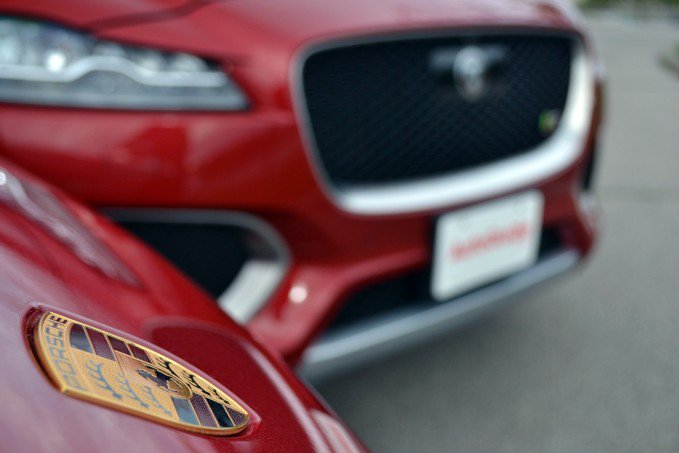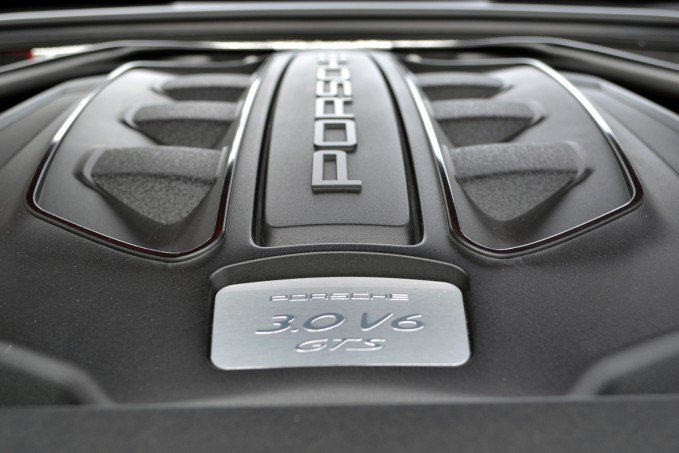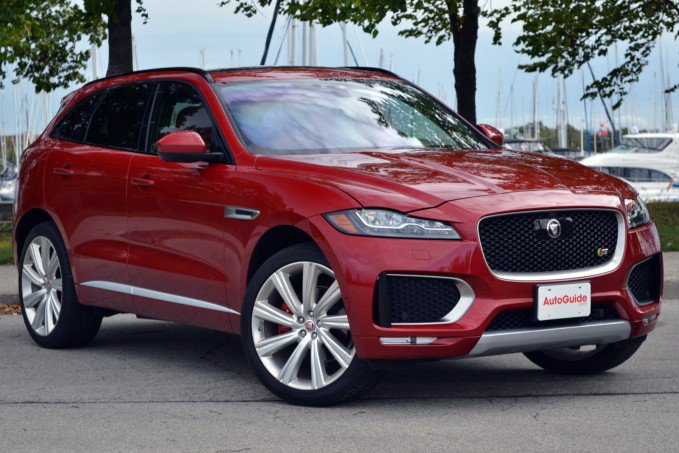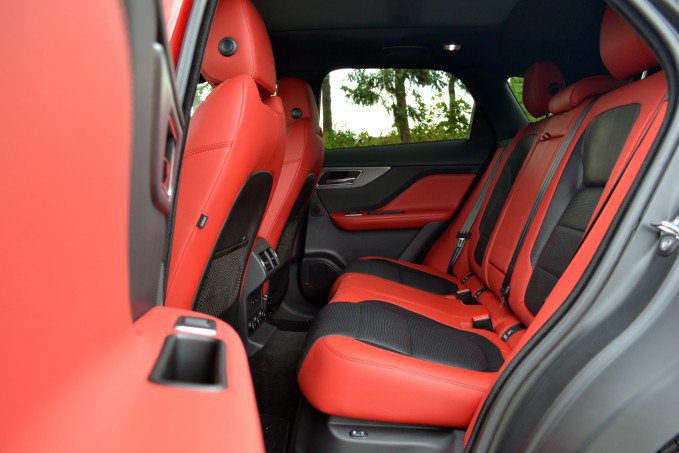When Porsche released the Cayenne back in 2002, it did so with a purpose, hoping to boost its stock with a model for the masses.
And it worked, with the brand’s first four-door propping it up in a way the 911 never could while creating a case for more non-sports cars from Stuttgart. The Macan compact crossover arrived more than a dozen years later to equal success, quickly becoming the brand’s best-selling model.
Hoping to replicate Porsche’s path to prosperity, the Jaguar F-Pace is charting a new course for a brand long synonymous with luxurious sedans and sporty coupes and convertibles. Careful not to step on the toes of sister brand Land Rover and its smattering of sport utilities, the F-Pace, like the Macan, is cut from the same cloth as its sports car siblings in spite of its people-moving proportions. It’s also got some serious ground to make up.
Big on Choice
The F-Pace enters the fray as the Macan’s momentum reaches an all-time high. Now available in four variations, including a four-cylinder-powered base model, the Macan can be served in all sorts of ways. And that’s to make no mention of the seemingly endless list of options that can be added — and with them thousands of dollars to the price tag. Our tester, a 2017 Porsche Macan GTS, ended up with only a few add-ons, but the as-tested price still ballooned well beyond the base MSRP to hit $78,890 ($86,495 in Canada).
ALSO SEE: 2017 Porsche Macan Review
The Jaguar, meanwhile, can be dressed up in six different trim packages, with the choice of diesel or gas engines under the hood. For the purposes of our comparison, we opted for the 2017 Jaguar F-Pace S. Optioned out at $68,645 ($79,325 in Canada), it’s a relative bargain compared to the Macan.
Two Means, One End
The Macan GTS and F-Pace S also take very different approaches to power creation. The Porsche gets its pull from the same twin-turbocharged V6 found in the Macan S, with the 3.0-liter cranking out 360 horsepower and 369 lb-ft of torque. The Jag, meanwhile, gets its giddyup from a same-sized 3.0-liter V6, but uses a supercharger to force more air into its manifold. This is the same engine found throughout the Jaguar-Land Rover lineup, including the fiery F-Type S, and comes packing 380 horsepower and 332 lb-ft of torque.
Compare Specs
The Macan’s power is relayed to its all-wheel-drive system through Porsche’s seven-speed dual-clutch automatic transmission, with the full breadth of torque coming online at 1,650 rpm and lasting all the way to 4,000 rpm. With a noticeable amount of lag before the turbos spool up, particularly when the gas pedal is mashed, the Porsche is best enjoyed when rolling onto the throttle, with smooth and steady power delivery following. It’s also the easiest way to motivate the crossover to 60 mph from a standing start in just five seconds (zero to 100 km/h in 5.2 seconds) — an impressive sprint that becomes even more so with the Sport Chrono package added.
ALSO SEE: 2017 Jaguar F-Pace S Review
Making 380 horsepower at its 6,500 rpm redline and a full 332 lb-ft of torque at 4,500 rpm, the supercharged F-Pace makes the same amount of power as the F-Type S, and boasts a much punchier response than the Porsche when the throttle is pinned. Sadly, though, the F-Pace doesn’t sound quite as snarly as its two-door stablemate, while the Macan sounds as pissed off as any Porsche this side of the 911 Turbo.
With power sent to a rear-biased all-wheel-drive setup through an eight-speed automatic gearbox, the F-Pace can blast from rest to 60 mph in 5.1 seconds (zero to 100 km/h in 5.5 seconds) — not far off the Macan’s mark despite the smaller serving of torque.
Divergent Drives
Where the Macan starts to pull away from the F-Pace — both literally and figuratively — is in its overall driving performance. While the Jag is impressively responsive, providing steering feel and feedback that’s atypical of an SUV, it’s just a step behind the Porsche when the turns tighten.
While there isn’t much body roll to speak of in the Jag, it rides a bit like a truck, communicating bumps in the road that the Porsche absorbs with ease. That’s largely a product of its 22-inch wheels and low-profile tires, which can create havoc on cracked pavement. The Macan, meanwhile, seems to roll over just about any surface with equal aplomb, and is just as well suited to casual commuting as it is enthusiastic driving. With steering that’s well weighted and lightning-fast shifts delivered through its PDK, the Porsche makes a great companion
for carving corners. The Macan’s air suspension can also be stiffer than the Jaguar’s yet somehow more compliant, featuring better damping rates that give it the ride characteristics of a sports car.
ALSO SEE: 2017 Porsche Macan GTS Review
The Jag was able to deliver a counterpunch at the pumps, however, averaging a combined 20.5 mpg (11.5 L/100 km) during our time with it compared to the Porsche’s 16.7 mpg (14 L/100 km).
Deceiving Dimensions
The Jaguar looks much larger than the Porsche, but that’s a product of its taller ground clearance than anything else. Standing at a Land Rover-like 8.4 inches (213 millimeters) off the ground, the F-Pace towers over the Macan, which hunkers down to appear much more compact. In reality, these two are similarly sized, with the F-Pace (186.3 inches, 4,732 mm) only slightly longer than the Macan (184.7 inches, 4,691 mm) from bumper to bumper. Likewise, maximum overall height of the Macan comes in at 63.6 inches (1,615 mm), only slightly shorter than the F-Pace’s 65 inches (1,651 mm).
Expected Interiors
It’s not just in overall ride height where the Jag appears taller than the Macan, with the F-Pace featuring much higher seating positions compared to the Porsche. With a commanding view of the road, the Jaguar feels much more like a sport utility from behind the wheel. That’s also the case behind the B-pillar, with the F-Pace feeling roomier in the second row of seats while offering more cargo room (33.5 cu-ft) compared to the Macan (17.7 cu-ft).
ALSO SEE: 2016 Lexus RX 350 vs Lincoln MKX
When it comes to fit and finish, there’s little separating the pair, with quality materials strewn throughout both cabins. The Jaguar’s seats are slightly less sport-focused, and don’t offer as much bolstering as the Porsche’s, but that’s about all that separates their interiors. Both feature touchscreen infotainment systems that are easy to use if a little dated-looking. The Porsche, meanwhile, features more buttons on the center console than a Boeing 747’s cockpit, and can be a little overwhelming at times.
The Verdict: Porsche Macan GTS vs Jaguar F-Type S
Where the F-Pace S bests the Porsche in practicality and price, the Macan GTS wins when it comes to performance. Both do impressive jobs of impersonating their sports car siblings, but the Macan does slightly better, feeling an awful lot like a bubble-back version of Porsche’s 718 Series.












